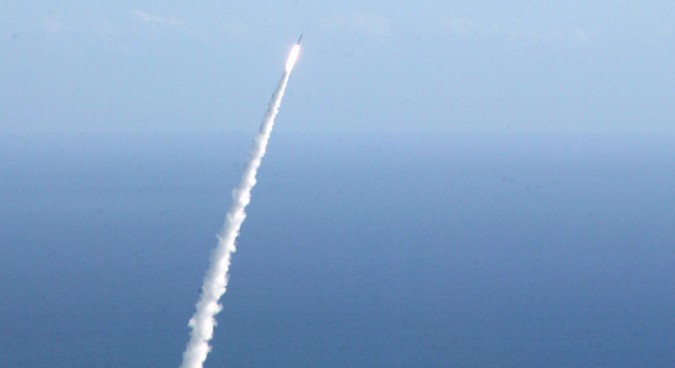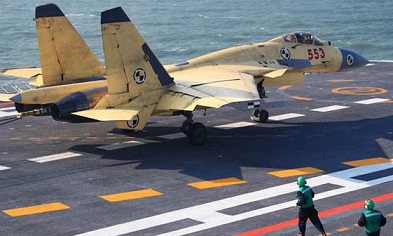
A file photo.
SEOUL (AFP): North Korea on Wednesday test-fired a ballistic missile towards the Sea of Japan, South Korea said, in an apparent show of force against the planned deployment of a US missile defence system.
Washington quickly hit back, with the State Department saying it was aware of the reports and warning it was prepared to "defend ourselves and our allies from any attack or provocation".
The latest test also comes amid mounting tensions ahead of a planned US-South Korea joint military exercise later this month. Last year the drills involved 30,000 US soldiers and 50,000 South Korean troops.
The missile was launched from near the western North Korea city of Unyul at around 07:50 am Wednesday, South Korea's defence ministry said.
The projectile flew some 1,000 kilometres and was believed to be a Rodong mid-range missile, the defence ministry added.
Japan's defence minister Gen Nakatani told reporters the missile was estimated to have fallen into Tokyo's exclusive economic zone 250 kilometres off its northern coast at 8:05 am Wednesday.
The test follows the launch of three ballistic missiles on July 19 in what the North said were simulated nuclear strikes on the South.
Pyongyang has carried out a series of missile tests this year in defiance of tough UN sanctions, and vowed to take "physical action" against the planned deployment of a US missile defence system in the South announced in July.
Since leader Kim Jong-Un took over from his late father Kim Jong-Il, who died in 2011, North Korea is believed to have tested 16 Scud missiles with a range of between 300 km and 1,000 km, six Rodong missiles, six Musudan missiles with a range of up to 4,000 km and three submarine-launched missiles, according to the South's Yonhap news agency.
UN resolutions prohibit North Korea from developing ballistic missile technology.
Pyongyang has repeatedly warned of pre-emptive nuclear strikes against the South and US targets, although the main focus of its nuclear weapons programme is to develop a credible strike threat against the US mainland.
A series of missile tests this year aimed at backing up that threat led to an agreement between Seoul and Washington to deploy the Terminal High Altitude Area Defence, or THAAD, system by the end of next year.
North Korea-US tensions had already been stoked by Pyongyang's fury at Washington's decision to personally target Kim with sanctions related to human rights abuses.
Together with the Key Resolve/Foal Eagle exercise, the Ulchi Freedom Guardian to be held this month is one of the two US-South Korea joint military exercises that are carried out every year on a massive scale.
 Previous Article
Previous Article









The Indian Air Force, in its flight trials evaluation report submitted before the Defence Ministry l..
view articleAn insight into the Medium Multi-Role Combat Aircraft competition...
view articleSky enthusiasts can now spot the International Space Station (ISS) commanded by Indian-American astr..
view article